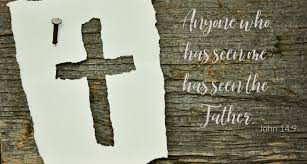
The beginnings of all ancient and modern religions have a common thread: one or two people have a revelation and persuade others to follow. Thus, for example, Buddhist writings tell us that Prince Siddhartha Gautama launched Buddhism after his solitary ascendance through the eight stages of Transic insight; Islamic texts tell us that Muhammad founded Islam following the first of many personal, prophetic experiences; Christian writings reveal that Paul first met Jesus, converted to Christianity, and spread the faith more than three decades after Jesus’ death; Joseph Smith, Jr., and his partner, Oliver Cowdery, launched the Church of Jesus Christ of Latter- day Saints (the Mormon church) after the two men were visited by angels and long-dead disciples of Jesus; and Sun Myung Moon launched the Unification Church after privately receiving direct orders to do so from Jesus himself. The beginnings of Children of God, Christian Science, Eckankar, Elan Vital, I AM, and Theosophy — in fact, the beginnings of all world religions — are equally unverifiable. Never does a large, clearly identifiable group of people experience prophecy and live to tell others about it. Moreover, in a handful of cases wherein large groups of people supposedly witnessed miracles, rarely are these witnesses named or identified in any way that would allow for verification; and in the very exceptional cases involving clearly identified groups of witnesses, never more than one or two of the religion’s current adherents claim to have met or descended directly from the named witnesses. In all these cases, the religion’s credibility rests on the credibility of its one or two founders. While it is certainly possible that the beginnings claimed by any of the thousands of sects and cults included in the world’s more than three hundred major religious traditions could be true, it is easy to imagine how charismatic charlatans could have launched any of these movements.
The one known exception to this rule is Judaism. The Torah claims that every Jewish man, woman, and child alive in 1312 B.C.E. — about three million people, according to the Torah — heard God speak at Mount Sinai and survived to teach their descendants about the event. Here we have an easily identifiable group — all of Jewry — who could have verified or denied the story any time during the first two or three generations after the alleged mass prophecy transpired. While it is easy to imagine how most religious mythologies could have been fabricated and spread, understanding how Judaism could be a lie requires more extensive analysis.Smart lies and foolish lies
Anyone who has studied history will affirm that people are gullible. We consistently find that sufficiently charismatic leaders can persuade people of any lie, even a lie that obligates followers to engage in painful or self-destructive behavior, as long as followers cannot check the lie. Lies that cannot be checked or validated are “smart” lies, insofar as they are maximally seductive. However, claims that can be checked, “foolish” lies, tend to be tested and rejected, especially when the lie obligates followers in unpleasant or suicidal observances.
As an illustration of this principle, consider the case of the California cult known as Heaven’s Gate. The group, led by Marshall Applewhite, included seventeen men and twenty-one women between the ages of eighteen and seventy-two. Applewhite taught his followers that he was an alien who first “moved into and took over” Jesus’ body just prior to Christianity’s founding, and that he again in 1970 “incarnated into” his current human body. In March 1998, Applewhite revealed to his followers a prophecy indicating that an approaching spaceship tailing the Hale Bopp comet was coming to pick up members of Heaven’s Gate, but that they would have to take lethal doses of phenobarbital in order to join him aboard the alien craft. On video, members of the group affirmed their faith in Applewhite’s vision and then commenced committing suicide. Significantly, Applewhite did not tell his followers that “the spaceship that dropped you (or your grandparents) here on Earth is coming to pick you up.” This would be a foolish lie. Applewhite, like all successful religious leaders, told smart lies — lies that couldn’t be checked.
Moses Theory and Fred Theory
The claim that three million people heard God speak appears in every intact Torah scroll ever found. The claim is either true or false. If it is a lie, and no such revelation ever took place, at some time in the past someone must have made such a claim. If we contemplate what the scene must have looked like when a false claim of national prophecy was first launched, we find ourselves locked into one of two scenarios: The person making the claim either told his followers (a) that the national prophecy happened in the present — “You personally heard God speak” — or (b) that the national prophecy happened in the past — “Your ancestors once heard God speak.” We might call the first theory “Moses Theory,” since the Torah records that “Moses” was the name of Jewry’s leader when the prophecy took place. We can call the second possibility “Fred Theory,” since the leader during this post-Sinaitic period need not be Moses — he might as well be Fred.
According to Moses Theory, ancient Jewry’s leader told a foolish lie: “You personally heard God speak, and He said these words: ‘I am the Lord your God. . . .’ ” We can imagine the scene as people first examined the supposedly divine Torah and their charismatic leader tried to explain to Jewry some of the text’s more unpleasant rituals: “Circumcision? Yes, use a very sharp knife and a quick downward motion . . . and it was the God Whom you heard speak Who told me you should do this!” People would probably know if they had heard God speak; and if they hadn’t heard God speak, they might be a little hesitant to accept the Torah’s validity. Because people won’t accept foolish (checkable) lies that demand self-destructive behavior, even critics who posit that the Torah is a fictional, man-made document reject Moses Theory.
Those who view the Torah as a work of human imagination therefore put their faith in Fred. They posit that the initial lie was: “God spoke not to you but to your ancestors. He gave them the Torah. They carried the Jewish tradition for a period but then fumbled, and it was forgotten. Now I, Fred, am returning to you your long-lost religious heritage.”
- GRDC in corruption allegations
- Divine insight: Secrets about prophetic timelines
- Grace tidings: Do you understand what it means to be holy?
- Katai fails to make the cut but …
Keep Reading
When would Fred claim the national prophecy took place? If he said it happened recently — to his followers’ parents, grandparents, or great-grandparents — the lie would be checked, discovered, and rejected. Therefore, Fred must claim the national prophecy took place during “ancient times,” five hundred or a thousand years earlier.
This is a smart lie insofar as it can’t be checked. Followers would understand why they have no memory of a tradition supposedly lost hundreds or thousands of years before.











